Sharing a little update on how we’ve transitioned our toddler from a crib to a bed and went from nap time to quiet time relatively easily (spoiler alert: nothing is easy!)
Our Crib to Bed Transition and Quiet Time With Our Toddler
For as active and physically able as Luca is, we didn’t need to transition him from a crib until he was almost 3 and a half years old. A month before he was going to be 3.5, he climbed out of the crib. We knew the day would come, but since he’s a very independent, often defiant, brave little boy, we were dreading the transition from crib to bed, because we thought that meant we’d never have our nights and that Luca would be running up and down the stairs all night.
And then, a couple months later, he decided he didn’t want to nap anymore and so, we had to transition to quiet time. It all sort of came at once, and I was surprised it didn’t happen sooner, but I wasn’t asking any questions! In today’s blog post, I’m going to share how we did it all.
A note: There’s not one-size-fits-all way to do anything. Do what works best for your family, because you and your child are unique individuals. I’m just simply sharing what worked for us!
Transitioning from Crib to Bed
In Luca’s room, there has always been a daybed. We put the daybed in his room when he was born so that we could have my mom stay with us for a couple weeks after he was born and help. Also, we always knew we’d want it just for play time, rough sleep nights, and then eventually, a bed when he transitioned. We also would read books with him in it. The daybed is from West Elm, bought 4 years ago, and it came with a Casper mattress (which is so comfortable, I debated whether or not to buy one for us!)
Luca is a very physically able kid, he can climb on the “big kids” parks no problem (the ones designed for 5+ year olds) and he can hang and swing on monkey bars. He’s dribbled a soccer ball up and down a field before he turned 2. That’s why, I was amazed that it took him so long to climb out of his crib – maybe he just accepted that that is where he slept? He’s pretty tall and always has been, so I’m also surprised he didn’t feel uncomfortable enclosed and wanted more space spooner. Alas, we didn’t ask questions and were prepared to keep him in there forever! Okay, not forever.
One day, he was fighting nap time (a few months after turning 3) and he kept jumping up and down and finally, he put one leg over and he climbed out! I ran upstairs and he just hopped out of the crib like a sphinx! That’s when I knew we had to convert the crib to a toddler bed. So, we converted it (he has the Babyletto Hudson crib which is convertible and now we’re using it for Roma.)
We included Luca on the conversion, told him our expectations (how he has to stay in the bed, etc.) He seemed excited to be in the big boy bed! And yes, at this point, he was night (potty) trained. You can read more about our potty training process here.
That first night we were so nervous. I was preparing for the worst! But there were no issues! He went right to bed. He didn’t follow us out of our room once. We thought we were the best parents, ever! “That was easy” we thought. In general, I do think that parents over-stress and over-analyze “transitional” moments and milestones. It’s usually easier than you imagined it would be (like removing the pacifier.) The first few nights were easy peasy.
Then, after week one, we had a difficult couple of weeks. Difficult as in he would come out of his bed almost immediately. Sometimes we’d forget to close the baby gate at the top of the stairs and we’d find him peeking his head out at the bottom of the stairs. Cute, but not cute. We would simply sternly tell him, “Luca, it’s time for sleep, let’s go back to your bed.” He would give us 92034 reasons why he didn’t want to go to sleep and we would keep saying, “You had a nice day, it’s time to rest so we can play again tomorrow.” And would not say anything to entertain his ideas. We just kept to our script and let him know he couldn’t get through our wall. We had to do this no more than two times (walk him back to his room.)
The next week, we started prepping him early in the night time process. We’d say, “Okay, we’re going to go take a bath, get in our jammies, read some books, go potty, say goodnight, and then you’re going to get in your bed and stay there and sleep.” That helped a lot. Then, we decided to offer him the “really” big boy bed (the day bed.) He seemed excited about that, especially because we were reading him books in that bed before putting him in his crib-converted bed. We used these bumpers on the side of his bed for safety.
After we set him in his big boy daybed, he stopped coming out of his bed. There will be a few nights here and there, but overall, he understands it now and stays in there. And it’s so precious to see them sleeping in their big beds. There’s something so precious about their little bodies in a bed and not a crib. Definitely a sweet parenting moment.
Nap Time to Quiet Time
By no means am I an expert on this transition (or any transitions, for that matter), but I’m simply going to share what worked for us! Now, I had never heard of “quiet time.” I just figured that when your toddler stops napping, you stop getting a break, haha!I follow @biglittlefeelings on Instagram and they posted a feature on quiet time and I was like, “Oh, what great timing! I think I’m going to need that soon!” They still have a highlight icon for it, so you should check out.
Basically, the idea is that when your toddler drops a nap, they’re still tired and they still need time to unwind, relax, and it’s also just very important to them at this age to have independence and know how to entertain, soothe, and rest themselves. Quiet time basically gives them a little bit of “me time.”
So when did I start quiet time? I started quiet time the moment he refused a nap. After 30 minutes of going up and down the stairs, trying to keep him in his bed and convincing him it was time for a nap, I knew the naps were coming to an end. Instead, I said, “Okay, you don’t need to nap, but you need to have some quiet time.” And then I explained to him, “During quiet time, you can play in your room, but you need to be quiet because you need to rest. When quiet time is done, Mommy will come and get you.” I aim to have him in his room for 90 minutes.
For the first few times (the first week) of quiet time, I started by putting him in his bed with some books and a bed-friendly activity (like some cars or something that you can play easily with while lying down or on your side.) I tried to keep these toys “novel” (I would bring a toy from downstairs up into his room and then bring it back downstairs afterwards.) I don’t recommend buying anything new because then you’ll get stuck in a trap of always having something new!
Quiet time worked out…. okay. He would really only stay there for 20 minutes and then he’d yell at the top of the stairs for us. Or, he would just make a raucous so we’d have to go upstairs and check on him. But we just stood firm. And we would reiterate what quiet time was. Sometimes, I’d lay out a blanket for him to play on with a pillow.
Then, I brought out the countdown timer. One day, before quiet time, I said, “Okay, we’re going to do quiet time a little differently today. Today, once quiet time is almost done, Mommy is going to come upstairs and set your timer so you can see how much time is left! When the timer goes off, you can come downstairs!” He loved this and would get so excited when the timer would go off, he had this look of accomplishment on his face!
Ever since we started with the timer, he loves quiet time. He loves it so much that now, he even falls asleep during quiet time! Depending on the kind of day he had (super active or if it’s a rainy day where he’s mostly inside) he will put himself to sleep. I think it’s beautiful to watch him know what his body needs. Also, I think with toddlers, they hate being told what to do and once I took the pressure off, he realized, “Ya, I do need to sleep sometimes!”
Quiet Activities for Quiet Time
If you’re stumped on what to put in you child’s room for quiet time, here are some ideas:
- Engaging books, like lift-the-flap books (sometimes my son doesn’t think to reach for these, because they’re away in the book shelf, but simply taking them out and putting them out makes them new!)
- Puzzles
- Magnet boards (we have a similar one to this)
- Any new toy that isn’t typically in their room – for example, we keep his Magnatiles in the basement, but sometimes we bring them up to his room for this purpose.
- Coloring books with crayons, Mess-free ink books, and magic stampers
- Stickers
- Duplo blocks or Magnatiles
- Cars (if your kid’s into that!)
A Note On The Quiet Time Transition
I’ll end with this. I often find that parents will say, “How do you get him to stay in there for 90 minutes?!” Well, it takes time and being stern and not backing down, even when you’re exhausted of walking him back in his room 20 times. Keep doing it and eventually it will click! I find that if you show a little leniency, kids will recognize that and it’s over. If you’re two weeks in and you’re ready to give up and just hand him the iPad on the couch (which is totally cool too and definitely “quiet time”!), just give it a few more days. Stand and stay firm!
I hope you found this post helpful! I’d love to know any more of your tricks and tips for quiet times.
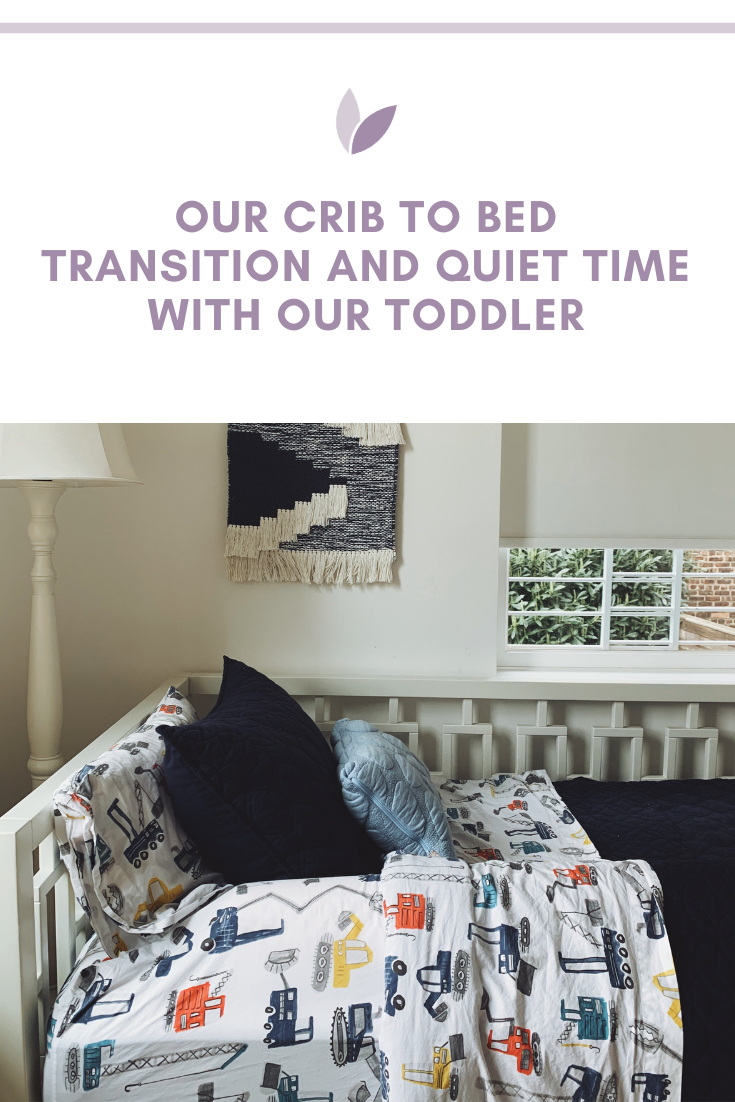






















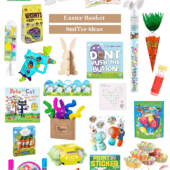
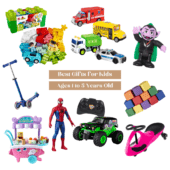








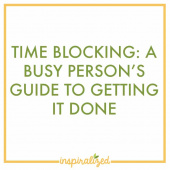












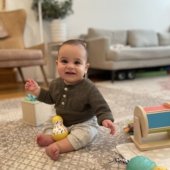
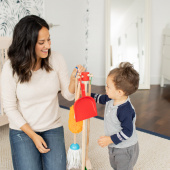
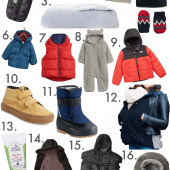
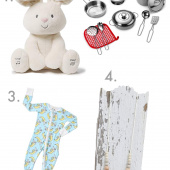
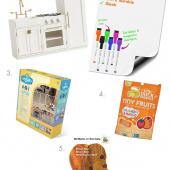


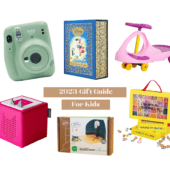

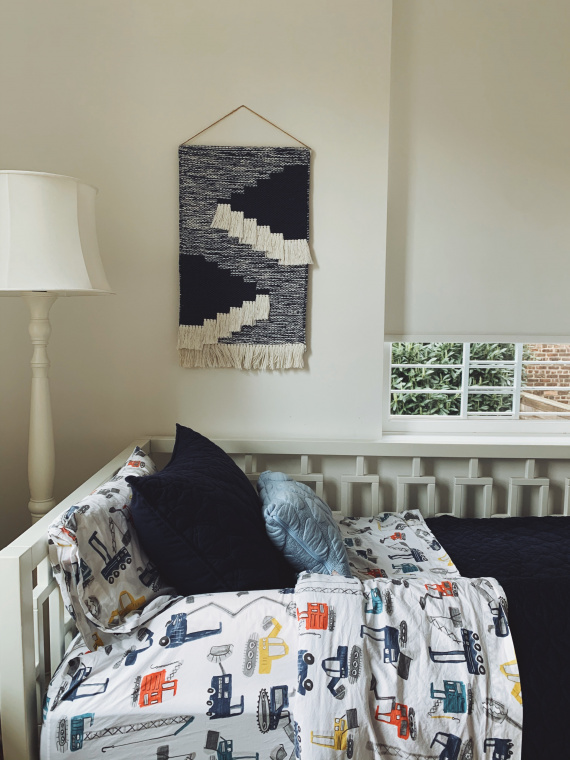
comments